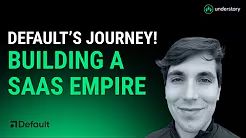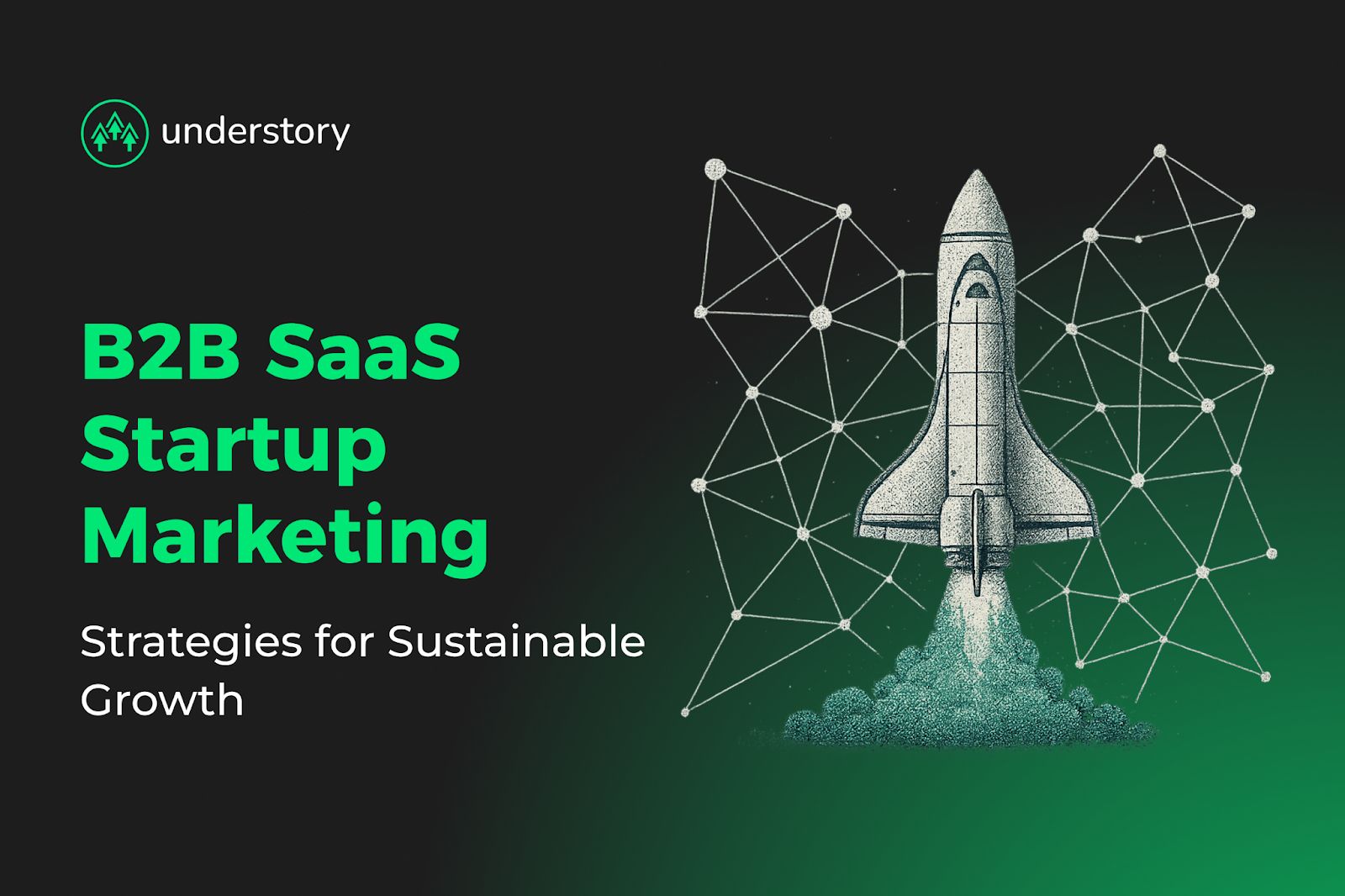
Understory Unfiltered: Santosh Sharan - From ZoomInfo to ZeerAI
Catch up on our Understory Unfiltered episode where Santosh Sharan shares why the same growth playbook never works twice and why two-thirds of SaaS companies will shut down.

Proven fixes for overcoming ad creative fatigue.
Creative fatigue can kill SaaS acquisition campaign performance in days, not weeks. Meta flags this critical issue once cost-per-result doubles compared to previous ads, immediately draining budget efficiency.
For SaaS growth leaders managing narrow addressable markets and complex buying committees, these performance swings directly impact customer acquisition cost and pipeline velocity. Every wasted click inflates CAC, counter to your board’s expectation of improving growth metrics.
Creative fatigue is preventable when you understand the warning signs, root causes, and proven rotation strategies that sustain campaign performance without resetting algorithmic learning phases.
Creative fatigue happens when your audience has seen the same visual, headline, or offer so often that it no longer triggers curiosity or clicks. Engagement falls even though your targeting, bidding, and budget remain on point. The pattern emerges when audiences tire of seeing the same ads repeatedly, with over-exposure driving declining creative performance metrics.
Ad creative fatigue is different from broad ad fatigue, which signals overall audience saturation. With creative fatigue, only the specific asset is worn out. A fresh image or hook can revive the very same ad set. If every variation under that ad set is stalling, you're facing ad fatigue. Distinguishing the two prevents you from burning a good audience or pausing a campaign that just needs a new headline.
Watch out for these signs that your ad creatives need refreshing:
The primary warning signal is CTR decline. A CTR sliding 20% below its seven-day average could signal creative fatigue setting in. Lower engagement tells Meta, Google, and LinkedIn that users aren't responding. This triggers higher auction prices and reduced impressions. Track CTR as your early-warning signal, because when prospects stop clicking, fatigue has already begun eroding performance.
Rising CPCs confirm that fatigue is driving up acquisition costs. When creative performance degrades, platforms charge more for each click because engagement signals weaken. High CPC increases with plateaued reach indicate that the same prospects are scrolling past tired creative, forcing you to overbid for attention. Monitor CPC alongside CTR. When both metrics trend negative simultaneously, a creative refresh becomes urgent.
CPA spikes represent the bottom-line impact of creative fatigue. As CTR drops and CPC rises, fewer clicks convert into actual leads or customers, compounding cost pressure. SaaS campaigns can see CPA double overnight when fatigue hits narrow technical audiences. Track CPA as your definitive performance metric, as this is what your board sees and what determines whether campaigns remain profitable.
CVR decline reveals when creative fatigue extends beyond clicks into actual pipeline impact. Prospects may still click from habit or residual interest, but worn-out messaging fails to convince them to take the next step. When CVR drops while CTR holds steady, your creative has exhausted its persuasive power with prospects who've seen it repeatedly. This pattern signals technical message overload. Audiences understand your offer but no longer find it compelling.
Negative comments, disengaged reactions, or declining social engagement provide qualitative confirmation of creative fatigue. When prospects start commenting, "seen this ad 100 times," or engagement on social platforms drops despite stable impressions, audiences are signaling exhaustion. Monitor comment sentiment and engagement rates, as these human signals often precede algorithmic throttling and give you early warning to refresh creative before platforms reduce delivery.
Frequency becomes critical once you cross four impressions per user, where habituation accelerates rapidly in technical SaaS audiences. Meta campaigns pushing beyond this threshold show steeper engagement drop-offs than any other variable. Once prospects scroll past your ad four times, they mentally file it as background noise, and platforms follow by throttling delivery. Track frequency alongside performance metrics to catch fatigue before it damages results.
Impression-to-click deltas reveal when the same prospects scroll past repeatedly without engaging. On Meta, declining first-time impression ratios signal audience saturation. On Google, lost Impression Share combined with stable budgets indicates that platforms are reducing your ad delivery because engagement has dropped. When impressions fall despite available budget, algorithms have already identified your creative as fatigued.
Not every performance wobble deserves a creative overhaul. Run this three-question diagnosis before mobilizing design resources:
Two or more "yes" answers indicate genuine creative fatigue. Otherwise, allow 24 hours for platform stabilization, as short-term auction volatility can mimic fatigue symptoms.
True fatigue shows stair-step decay, with daily CTR erosion, incremental CPC increases, and fading impressions as algorithms reduce delivery.
Before strategizing how to address ad creative fatigue, it’s helpful to consider the likely source for each drop in performance. Four patterns typically drive creative fatigue in SaaS campaigns:
The table below outlines the symptoms and warning signs for each of these common issues to help diagnose ad creative fatigue.
| Cause | Immediate Symptom | Metric Red Flag |
|---|---|---|
| Overexposure to the Same Creative | Audience scrolls past ad automatically | CTR ↓ ≥25%; Frequency >4 impressions |
| Lack of Creative Rotation | Platform flags performance decline | Impressions ↓ despite budget; "Creative Fatigue" alerts |
| Narrow Audience Targeting | Same prospects see ads repeatedly | CPC ↑ ≥20% while reach plateaus |
| Repetitive Messaging and Visuals | Engagement stalls across all channels | Multi-channel CTR decline; reduced social interactions |
Isolating the right root cause lets you prescribe the right solution and restore performance without coordinating multiple specialists guessing at fixes.
When metrics signal fatigue, speed matters. You need a triage sequence that restores momentum without resetting every algorithmic learning phase. Start with the lowest-lift adjustments, then graduate to structural changes only if performance does not improve after 48–72 hours.
A stale headline or hero image is often the single point of failure. Changing just those elements has revived CTRs for fatigued campaigns without touching budgets or targeting. Keep core positioning intact, simply reframe the hook so prospects stop scrolling.
Static cards fatigue fastest; short videos, carousels, and interactive polls buy you extra attention on social feeds. Fresh video variants can regain lost reach that algorithms had already throttled. Your B2B SaaS demo clip doesn't need Hollywood polish: 15 seconds of product in action often outperforms polished explainers because it feels native to the feed.
The moment Meta frequency creeps past four, the platform itself begins flagging issues, and costs climb. Mid-funnel SaaS sequences perform best when individual creatives stay under four impressions per week.
If you're already above that ceiling, pause the ad set, clone it with a fresh asset, and re-launch at 80% of the prior daily spend to help manage spend and control risk as the new ad set re-enters the learning phase.
Even refreshed visuals stall if the same eyeballs keep seeing them. Exclude past engagers for one to two weeks so the system can source fresh lookalikes. Simple exclusion lists have lowered CPA across display retargeting by making room for new high-intent cohorts.
Pair LinkedIn firmographic filters (title, company size, industry) with wider Meta lookalike ranges so you reach adjacent buying-committee members without abandoning precision. This step keeps volume humming while you rebuild narrower remarketing pools that have cooled off.
Automation tools mix headlines, images, and CTAs on the fly, letting algorithms discover winning combinations far faster than manual A/B tests. Modular asset libraries also mean your design team edits components, not full ads, accelerating each future refresh.
B2B SaaS audiences run small, so single assets wear out quickly. Commit to regularly launching new creatives and retiring variants that underperform on meaningful CTR and impression thresholds.
Tight loops help you stay ahead of the algorithm's decay curve while preventing the "learning-phase reset" that happens when you swap everything at once.
Maintaining this testing cadence while coordinating creative production, campaign management, and performance analysis across multiple specialists creates the exact coordination overhead that slows SaaS scaling.
SaaS growth leaders waste strategic time coordinating between paid media agencies, creative teams, and outbound specialists while creative fatigue drains budgets. Understory eliminates this coordination overhead with integrated paid media management across Meta, LinkedIn, and Google, paired with professional creative services and Clay-powered outbound.
We specialize in B2B SaaS companies where narrow technical audiences and complex buyer journeys magnify creative fatigue risks. Our coordinated approach monitors frequency thresholds, rotates creative assets proactively, and maintains consistent technical positioning across all paid channels.
Book an intro call with us today to stay ahead of ad creative fatigue.

Catch up on our Understory Unfiltered episode where Santosh Sharan shares why the same growth playbook never works twice and why two-thirds of SaaS companies will shut down.

Catch up on our Understory Unfiltered episode with Nico, founder and CEO of Default, on building a unified go-to-market platform

Coordinate paid media, outbound, and creative under one playbook for predictable SaaS pipeline.

Why outsourced lead generation fails and how to avoid the coordination trap.